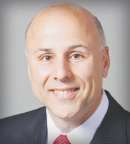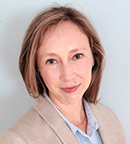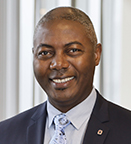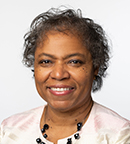Among most members of the health-care and oncology workforces, the lofty goals of the organizational framework of diversity, equity, and inclusion (DEI) seem to be clear and indisputable: to promote the fair treatment and full participation of all people, particularly groups who have historically been underrepresented or subject to discrimination on the basis of identity or disability. However, the majority of professionals inside these arenas—and most individuals outside them as well—are well aware of the current volatility surrounding the term DEI, even in political circles, as well as the sensitivities and emotions it stirs up.
On September 10, 2024, experts assembled in Washington, DC, to participate in the NCCN Oncology Policy Summit: Advancing Diversity, Equity, and Inclusion in the Cancer Workforce. During the second panel discussion of the day, legal and clinical experts in the health-care sector assembled to discuss the difficulties they and their colleagues face in maintaining a commitment to DEI while navigating a challenging and possibly changing policy landscape—on federal, state, local, and even institutional levels.
The Current Policy Landscape and DEI

Clifford Goodman, PhD

Heather Alarcon, JD
Panel moderator Clifford Goodman, PhD, a consultant in health-care technology and policy, opened the discussion by asking the panel how the current policy landscape—including federal cases, proposed legislative bills, local legal parameters, and changing institutional strategies—may be impacting the promotion of DEI in oncology in their experience.
According to Heather Alarcon, JD, Senior Director of Legal Services at the Association of American Medical Colleges (AAMC), not much has changed at AAMC. However, she added, “for our member institutions a lot has changed. There are a number of states with laws that may limit what a medical school can teach or constrain hiring practices. That has been a major limitation for them to achieve their goals related to health equity for their patients,” she added. In fact, Ms. Alarcon continued, there seems to be anxiety along with a change in attitude and perspective, with some administrators scaling back on certain DEI policies.

Chyke Doubeni, MD, MPH

Deborah Grimes, RN, JD, MSHQS
Chyke Doubeni, MD, MPH, Chief Health Equity Officer of The Ohio State Wexner Medical Center and Associate Director/Researcher at The Ohio State University Comprehensive Cancer Center, agreed with Ms. Alarcon. There is pending legislation related to DEI in many states, and he noted that Ohio is one of them. Although Dr. Doubeni noted “they have stayed the course,” some activities have been constrained amid “a subcurrent of fear.” However, he added, it has forced he and his colleagues to think more creatively about how to do their work. “This is not a red state/blue state issue but a national sentiment around DEI that we have to collectively manage,” he declared.
Although for Deborah Grimes, RN, JD, MSHQS, it has become a challenging health-care environment in which to work, she believes the issue centers on the fact that regulatory agencies—not political or legal entities—create standards to provide excellent care. “If you are not doing DEI, you are harming patients,” she noted. When DEI is connected to the core belief in providing good outcomes to make communities and states healthier, “that is not divisive or debatable,” she said. “The very nature of inclusivity is that it is about all of us.” Ms. Grimes is Senior Vice President and Chief Diversity Officer at Ochsner Health in Louisiana.

Christopher Li, MD, PhD

Eugene Manley, Jr, PhD
Christopher Li, MD, PhD, Vice President, Faculty Affairs and Diversity, Fred Hutchinson Cancer Center, Seattle, shared news that the Washington governor “renewed his commitment to combating discrimination and racism in the workplace.” Although Dr. Li admitted he and his colleagues have added a layer of scrutiny to ensure their DEI efforts are legal and compliant, “we have not had to change anything in the face of the current landscape in terms of efforts to support and recruit our trainees,” he said.
As for Eugene Manley, Jr, PhD, founder and Chief Executive Officer of the STEMM & Cancer Health Equity Foundation in New York, the current policy landscape has “not affected him at all.” Dr. Manley runs a nonprofit organization, focusing on disseminating accurate information on lung cancer among other conditions to diverse and underserved populations. “We can still do outreach programs and speak to kids across the country,” he stated.
Are Policy Changes Affecting the Oncology Workforce?
One shared comment from Dr. Li and Ms. Alarcon centered on taking a closer look at the applicant pool. According to Dr. Li, there are no legal restrictions on enhancing the diversity of applicants and including best practices in faculty recruitment. “Making structural changes to our practices and policies, using outreach, social media, and professional organizations to get the word out about a position opening,” he added, led to hiring more faculty from underrepresented communities. In fact, in a single year at his institution, the rate of hiring from these previously neglected communities went from 3% to 18%. “There is a lot of power in looking closely at what your policies and practices are and making evidence-based changes,” he suggested. “Treat search as a verb.”
Similarly, Ms. Alarcon noted that the diversity of the applicant pool to the medical institutions AAMC represents continues to be lacking. She encouraged pushing beyond the usual undergraduate institutions to better represent marginalized populations. “There are lots of gradations of diversity—not only racial and ethnic backgrounds but also socioeconomic status,” she explained. “It is not that the cream is not rising to the top; the cream has no path to the top,” she commented.
“One of the loudest things I hear from our community is that it wants a clinical care environment that reflects the community we serve,” stated Dr. Doubeni. Consequently, it is necessary to reach out to communities where resources are lacking at the earliest point possible, he added, such as during elementary and middle schools. Dr. Manley agreed, suggesting third grade was the time to catch kids to get them interested in science and medicine. “There are students across the spectrum, but you have to be willing to look for them,” Dr. Manley noted.
Dr. Li agreed with the other panelists regarding the lack of people from underrepresented or minoritized backgrounds going into medical specialties, although he said there is some variation across disciplines. For instance, he added, “medical oncology and radiation oncology are among the least diverse specialties in the cancer care workforce—almost at the very bottom.”
Members of the panel next turned to what the health-care workforce, and the oncology workforce in particular, might look like in the next 10 years. “With fewer and fewer people going into the practice of medicine,” Ms. Grimes predicts a huge health-care worker shortage ahead. “We cannot think of this from the lens of just DEI, but we have to look at it from the lens of the workforce period,” she emphasized.
For both Ms. Alarcon and Ms. Grimes, racial concordance between a physician and a patient should not be the ultimate goal. “All patients should feel comfortable with any doctor,” explained Ms. Alarcon. A culture should be created, added Ms. Grimes, where “we meet everyone on a human level.” Key components to developing trust in the physician-patient dyad include being taught humility from the beginning, enhancing one’s listening skills, and having empathy in shared conversations. “Trust does not have a color or a gender; trust is a thing that is earned,” stressed Ms. Grimes. If every patient sitting in front of every doctor is respected, she added, “we don’t need to talk about diversity.”
Biggest Concerns About the Future of DEI
In closing, Dr. Goodman asked the panel to look into its crystal ball to see what the next 2 to 5 years worries them the most in terms of DEI. For Ms. Alarcon, two scenarios are most concerning. First is any instability in immigration policy that might jeopardize the availability of immigrant health-care workers filling key gaps in our health-care workforce. Second is the increasing inappropriate involvement by legislators in care decisions best reserved for physicians and their patients. “Our future leadership has to recognize how crucial, precious, and sacred the relationship is between doctors and their patients,” she stated.
According to Dr. Doubeni, anti-DEI legislation will have a negative impact on programs such as cancer screening. “Evidence-based decisions that need to inform our practice of medicine can be undermined, and that would be harmful long term,” he commented. Dr. Li agreed and is most concerned that “federal-level, anti-DEI legislation would dismantle programs that have been so successful in making progress in diversity in clinical medicine and academia.”
Ms. Grimes and Dr. Manley offered even more sobering takes on what the future of DEI might look like. “It all worries me,” said Ms. Grimes, “because it could potentially allow us to make emotional decisions that are not founded in fact. That will not be good for the country or for the patients we all want to serve.” Dr. Manley shared this belief: “Systems inherently in the country were never designed for diverse people to excel.”
In trying to end the discussion on a more optimistic note, Dr. Goodman asked the panelists to share what makes them feel upbeat about the future of health care. For Dr. Li, the junior faculty from minoritized backgrounds are adding new perspectives at his institution. The emergence of advocacy groups is what makes Dr. Manley smile. For Ms. Alarcon, she is pleased to see that “medical schools have not missed a beat to continue to strive for health equity.” And, finally, for Ms. Grimes, she is bolstered by the people of Louisiana. “They are incredibly resilient, genuinely care about each other, and believe there is nothing they cannot overcome.”
DISCLOSURE: All panelists reported no conflicts of interest.

